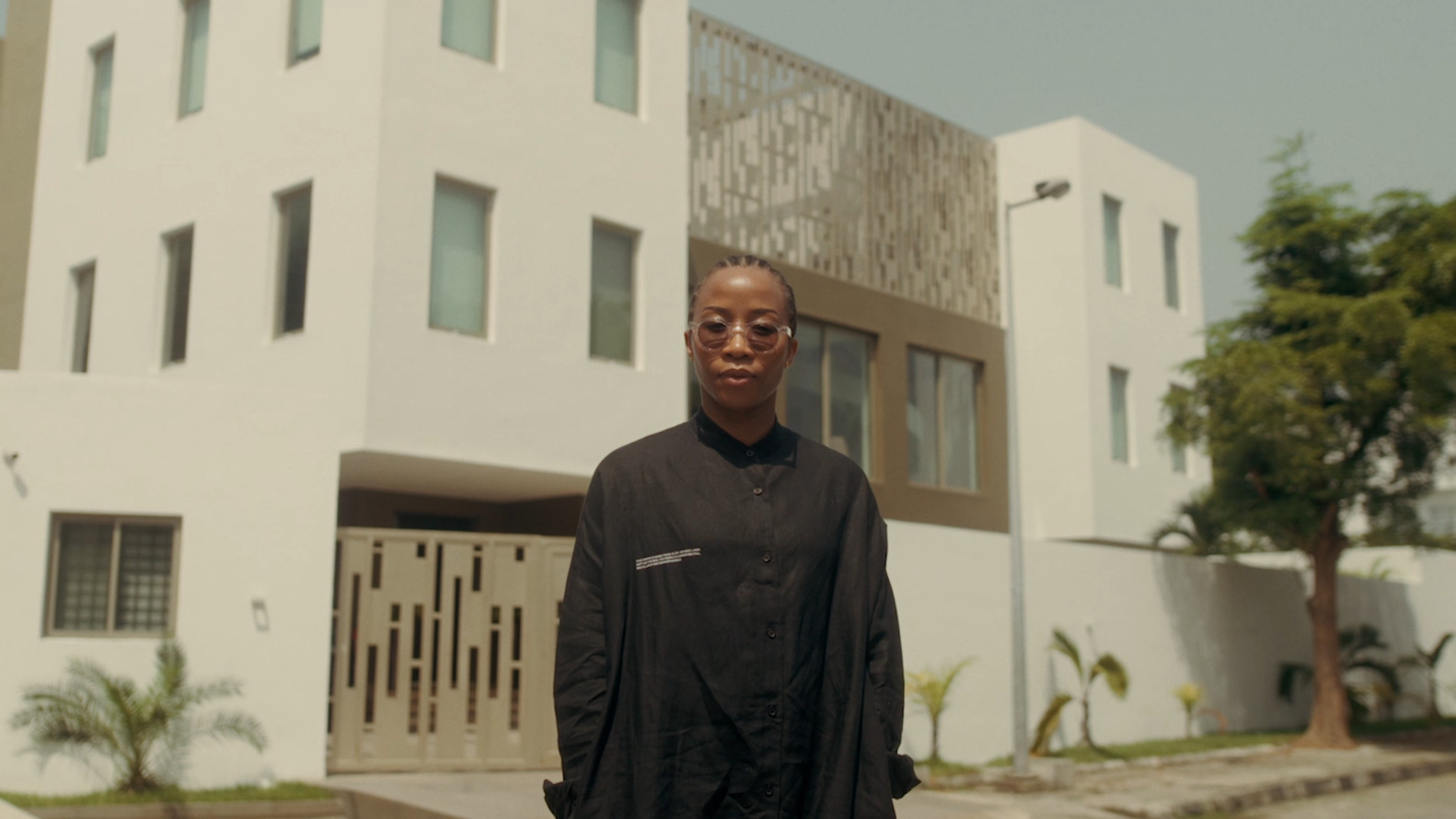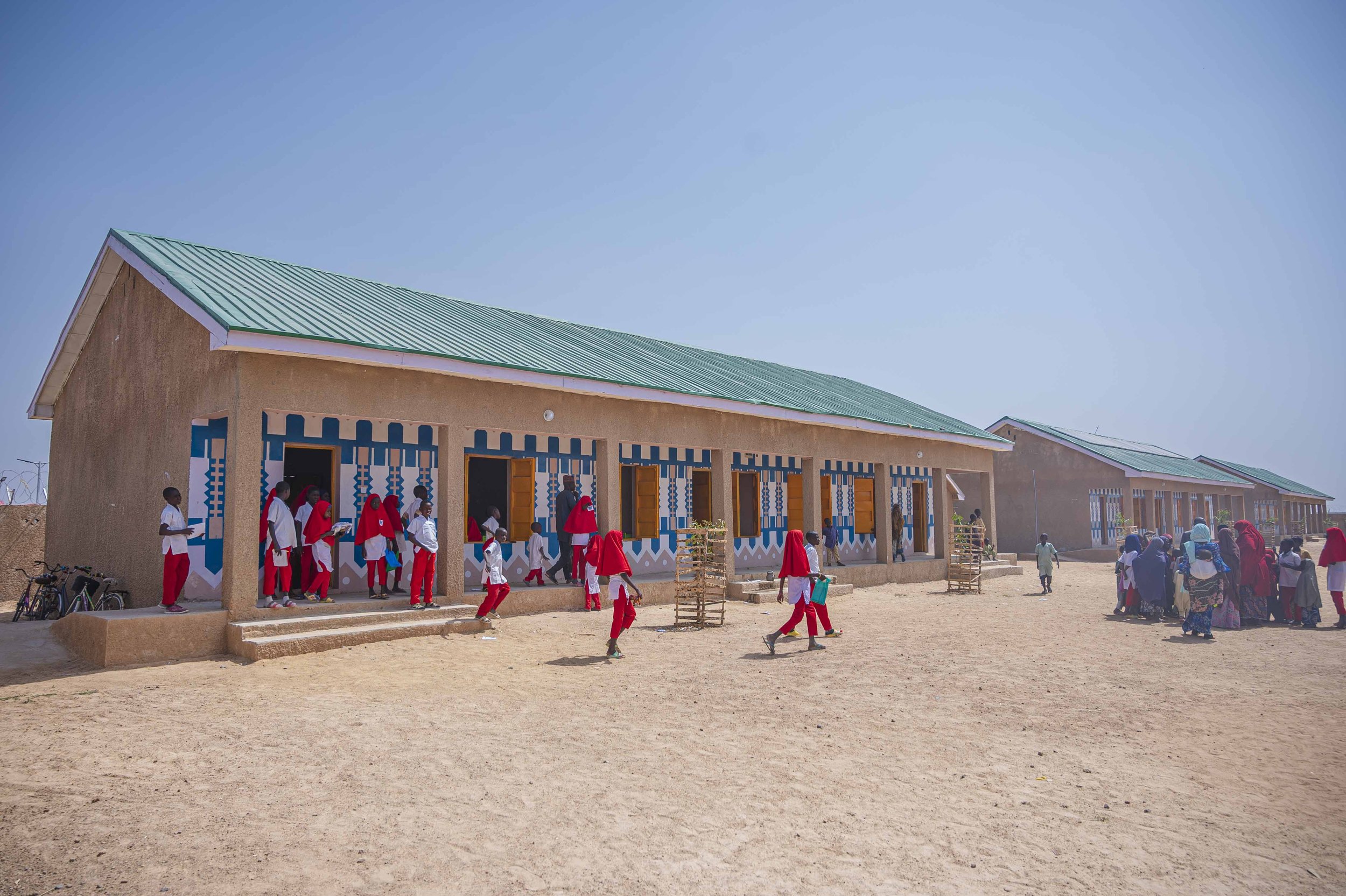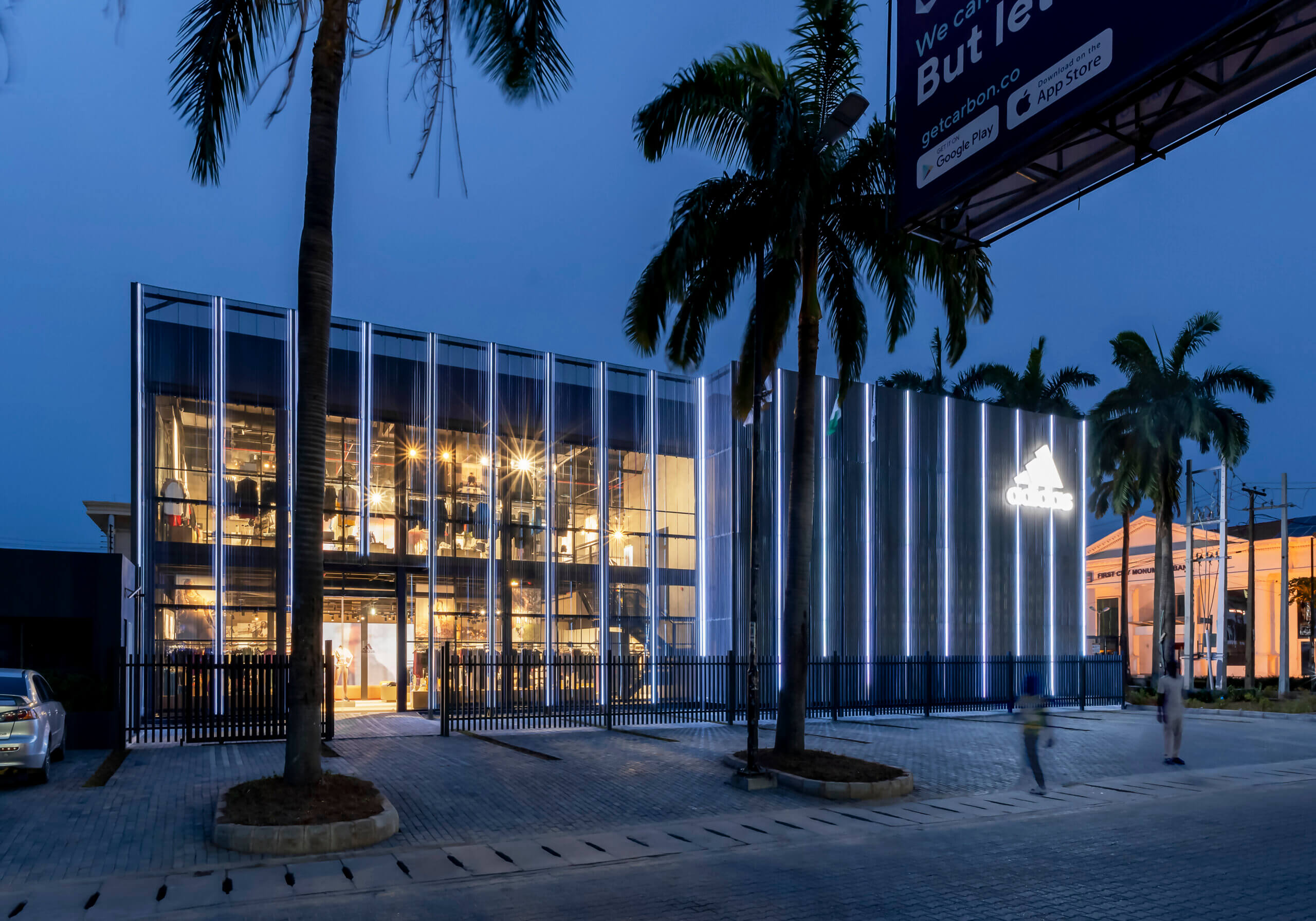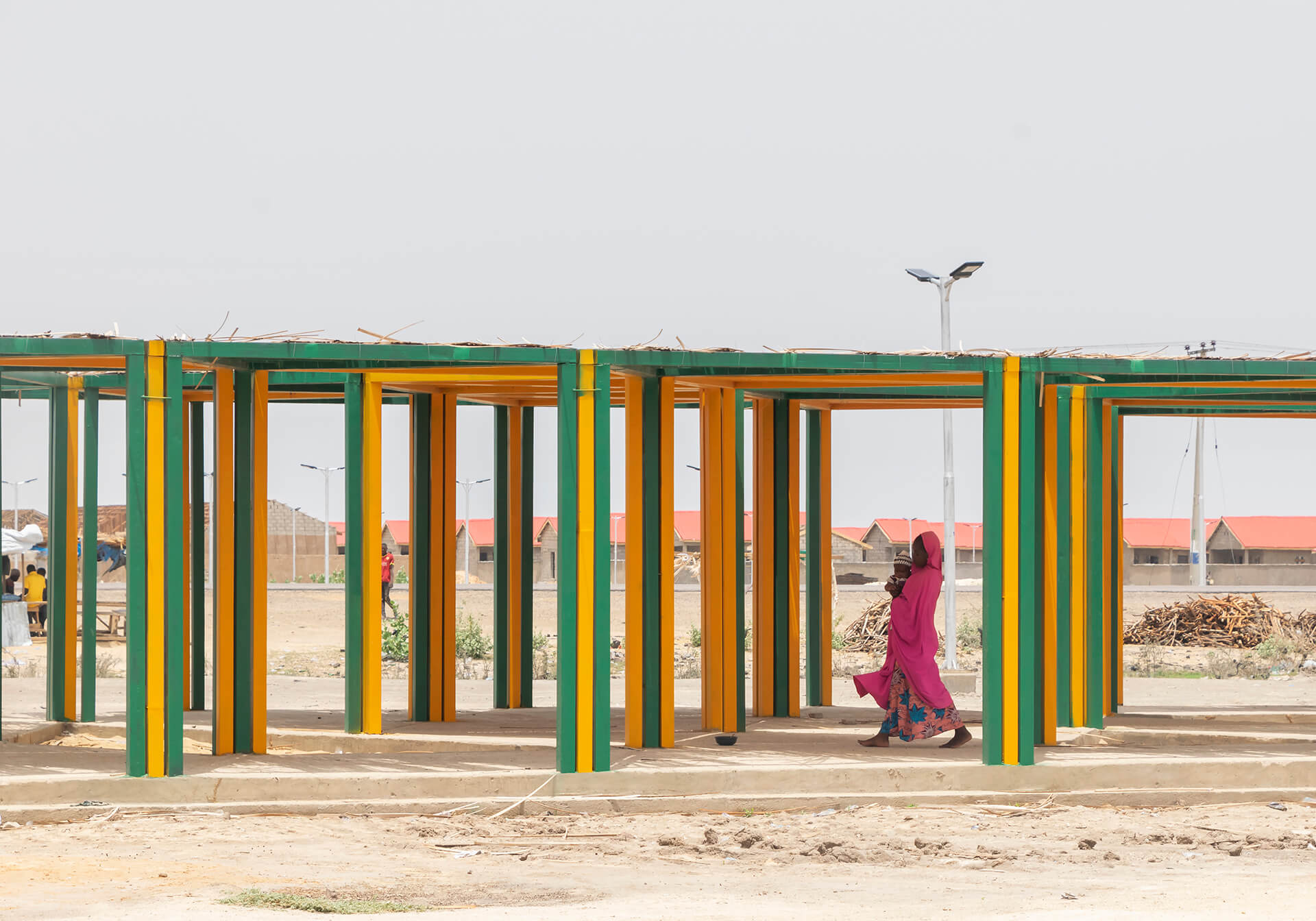Redefining African Architecture Through Context and Collaboration

Architecture is a discipline where theory and practice meet, transforming abstract ideas into spaces that shape and respond to human lives and identity. For Nigerian architect and curator Tosin Oshinowo, this dynamic is at the core of her work. As the founder of Oshinowo Studio and curator of the 2023 Sharjah Architecture Triennial, she has carved a unique path in contemporary architecture by blending cultural specificity, climate consciousness, and global relevance.
In the documentary Women in Architecture, released November 12, 2024, Tosin Oshinowo is featured alongside Dorte Mandrup, exploring diverse perspectives within architecture, with Oshinowo’s work taking center stage as an example of how architecture can respond meaningfully to cultural and environmental contexts. Produced by Sky-Frame in collaboration with ArchDaily and directed by Boris Noir, the film builds upon the first episode, highlighting Toshiko Mori, Gabriela Carrillo, and Johanna Meyer-Grohbrügge.
PUBLICATION
Arch Daily
DATE PUBLISHED
November 27 2024
Abuja, Nigeria
Oshinowo’s contributions to architecture reflect a holistic approach that spans from theory to practice, emphasizing cultural identity, equity, and sustainability. Her work explores how African architecture can move beyond stereotypes to embrace modernity while remaining deeply rooted in context. This article delves into the philosophy behind her practice, highlights notable projects that define her career, and examines her curatorial efforts to challenge global architectural narratives. Through her work, Tosin redefines what it means to create architecture that is local yet universal, humble yet impactful.
Oshinowo’s upbringing in Lagos, a city of vibrant density and layered histories, shaped her foundational understanding of the built environment. This context, combined with her architectural education in London, gave her a dual perspective: one rooted in her Yoruba heritage and another influenced by global architectural discourse. This duality informs her approach to architecture, enabling her to navigate the intersections of local and global, traditional and contemporary.
In her work, cultural awareness goes hand in hand with contextual sensitivity. For example, her built project Lantern House reimagines Yoruba traditions of spatial organization in a contemporary form, addressing the layered public and private spaces essential to Nigerian family life. Similarly, her UNDP housing project for a community displaced by Boko Haram in Northern Nigeria showcases her ability to adapt architectural solutions to local cultural and environmental contexts. Using regionally available materials and typologies, she created homes that respected the community’s heritage while providing functional and dignified spaces for recovery and rebuilding. This emphasis on context underscores her belief that architecture must “listen” to its environment and its users. “Designing for people means listening,” Oshinowo explains, a principle that has guided her practice in projects ranging from urban interventions to private residences.

Rethinking African Architecture
Oshinowo’s philosophy challenges narrow definitions of African architecture, often framed as either rooted in vernacular traditions or replicating colonial modernism. She advocates for a third way—an approach that adapts to people’s needs and cultural contexts while embracing modern materials and techniques. Her work prioritizes simplicity and material authenticity, ensuring that design enhances, rather than dominates, the spaces it inhabits.
Her redesign of a 1970s building for the Adidas Lagos flagship store exemplifies this philosophy. By incorporating corrugated metal sheets, a material commonly associated with informal settlements, Oshinowo created a striking facade that pays homage to Nigeria’s everyday architecture while elevating it within a high-design context. This project demonstrates how architecture can draw inspiration from local narratives and reinterpret them in innovative ways.
Beyond aesthetics, Oshinowo’s work considers how architecture can encourage equity and inclusivity. She emphasizes that design must not only reflect the physical environment but also align with the social and cultural dynamics of its users. This perspective positions her as a leading voice in rethinking African architecture as a practice deeply connected to its context and its people.

Curating Architectural Narratives
As curator of the 2023 Sharjah Architecture Triennial, Oshinowo extended her architectural practice into a platform for global dialogue. The triennial, titled The Beauty of Impermanence: An Architecture of Adaptability, explored how informal systems in the Global South offer innovative solutions for resource-conscious and climate-responsive design.
“There is no center,” Oshinowo remarked in an interview with ArchDaily, underscoring her rejection of dominant architectural narratives that prioritize Western approaches. Instead, the triennial highlighted diverse practices from regions often excluded from mainstream discourse. These systems of resilience and adaptability—born out of necessity—have much to teach the global design community about how architecture can respond to environmental and economic constraints.
The Sharjah Triennial also provided a space to reflect on the interplay between architecture and culture. Oshinowo’s curatorial vision celebrated the ingenuity of informal systems, such as market structures and self-built housing, which demonstrate how people can adapt to and thrive within challenging conditions. Her curation emphasized the importance of looking beyond conventional frameworks to understand the potential of architecture as a tool for resilience and innovation.
For Oshinowo, curation and practice are inherently linked. Her experiences in Lagos, a city where systems often operate informally, informed the conceptual framework of the triennial. In turn, the insights gained through her curatorial work continue to influence her architectural projects, particularly in research on informal markets and urban resilience.
Designing for Equity and Sustainability
Equity is a central pillar in Oshinowo’s work. Her designs prioritize human needs, creating spaces that align with the cultural, environmental, and social realities of their users. She believes that architecture must serve as a backdrop for life, enabling people to interact with spaces in meaningful ways. Her perspective on equity also includes challenging societal biases within the profession. As a woman architect in Nigeria, Oshinowo has navigated structural barriers, including gender and age biases. She emphasizes the importance of training future generations to approach architecture as a gender-neutral profession, ensuring that opportunities are based on skill and contribution rather than societal prejudices.

